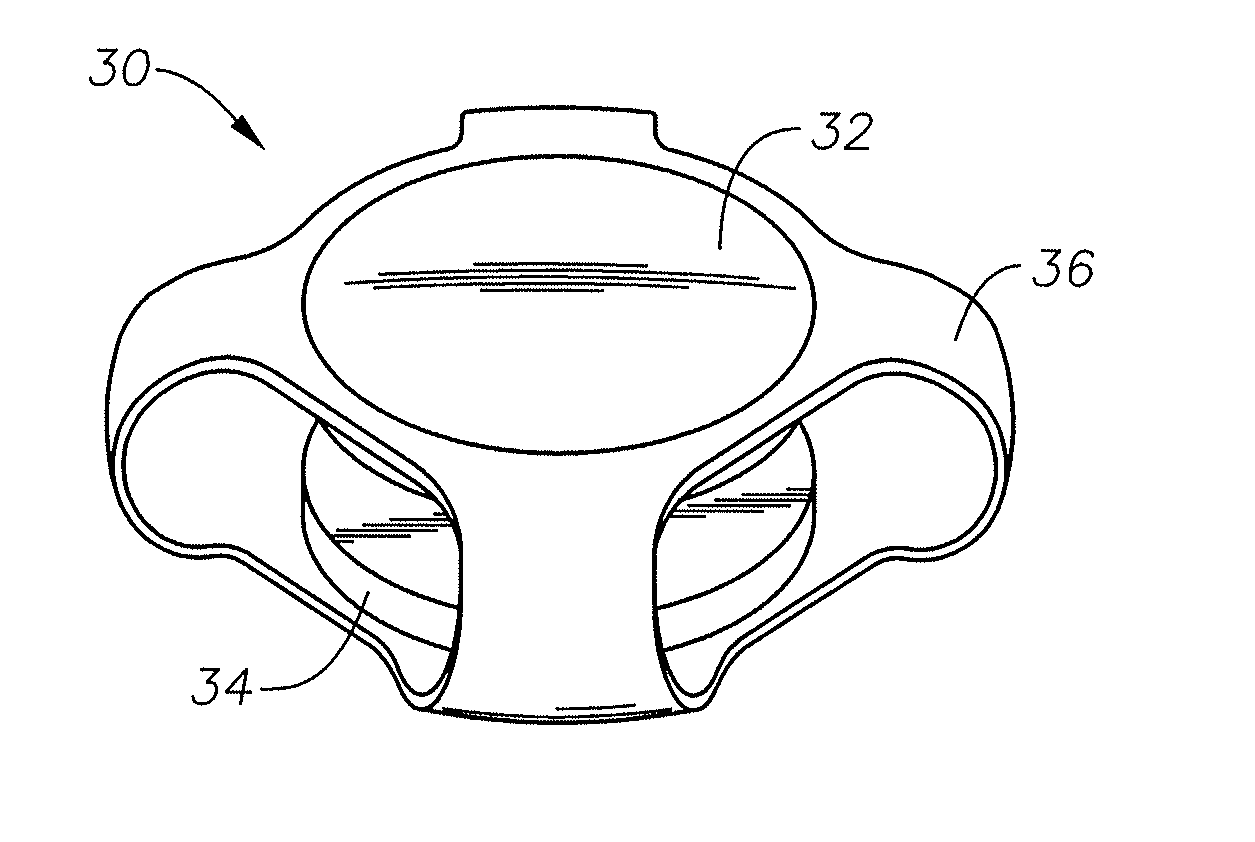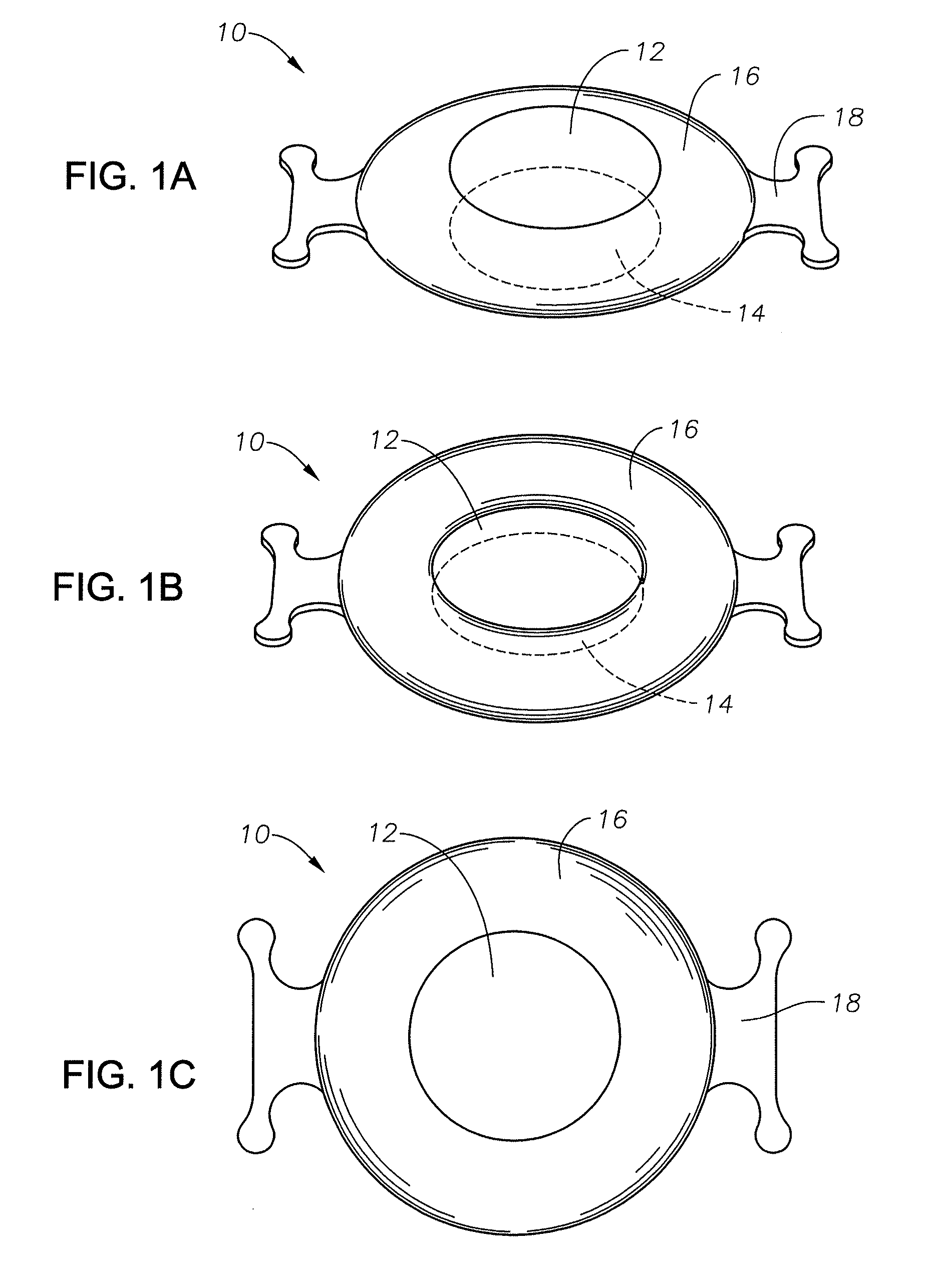Dual optic accommodating iol with low refractive index gap material
- Summary
- Abstract
- Description
- Claims
- Application Information
AI Technical Summary
Benefits of technology
Problems solved by technology
Method used
Image
Examples
second embodiment
[0043]FIGS. 3A-3B and 4A-4B illustrate a dual optic system 20 according to the invention again having a first optic 22 and a second optic 24. The optics 22, 24 are similarly joined to a flexible haptic 26. However, in this embodiment, a separate flexible chamber 27 filled with air or a similar low refractive index fluid is disposed between the first and second optics. In response to movement of the ciliary muscle, the flexible haptic and flexible chamber are adapted to change shape (as shown in FIG. 4B) such that the air gap between the optics is reduced.
third embodiment
[0044]FIGS. 5A-3B and 6A-4B illustrate a dual optic system 30 according to the invention again having a first optic 32 and a second optic 34. The optics 32, 34 are again joined to a flexible haptic 36. However, in this embodiment, optic 32 is joined to a first low refractive index chamber 31, e.g., a rigid or flexible shell again filled with air or a similar low refractive index fluid and, optionally, optic 34 is likewise joined to a first low refractive index chamber 33, e.g., again a rigid or flexible shell again filled with air or a similar low refractive index fluid. (It should be clear that a low refractive index optical element can be joined to either the optic 32 or the optic 34 or both and desired effect of amplifying accommodation will be achieved so long as the low refractive index optical element occupies at least a portion of the space between optics 32 and 34). Again, in response to movement of the ciliary muscle, the flexible haptic is adapted to change shape (as shown...
PUM
 Login to View More
Login to View More Abstract
Description
Claims
Application Information
 Login to View More
Login to View More - R&D
- Intellectual Property
- Life Sciences
- Materials
- Tech Scout
- Unparalleled Data Quality
- Higher Quality Content
- 60% Fewer Hallucinations
Browse by: Latest US Patents, China's latest patents, Technical Efficacy Thesaurus, Application Domain, Technology Topic, Popular Technical Reports.
© 2025 PatSnap. All rights reserved.Legal|Privacy policy|Modern Slavery Act Transparency Statement|Sitemap|About US| Contact US: help@patsnap.com



